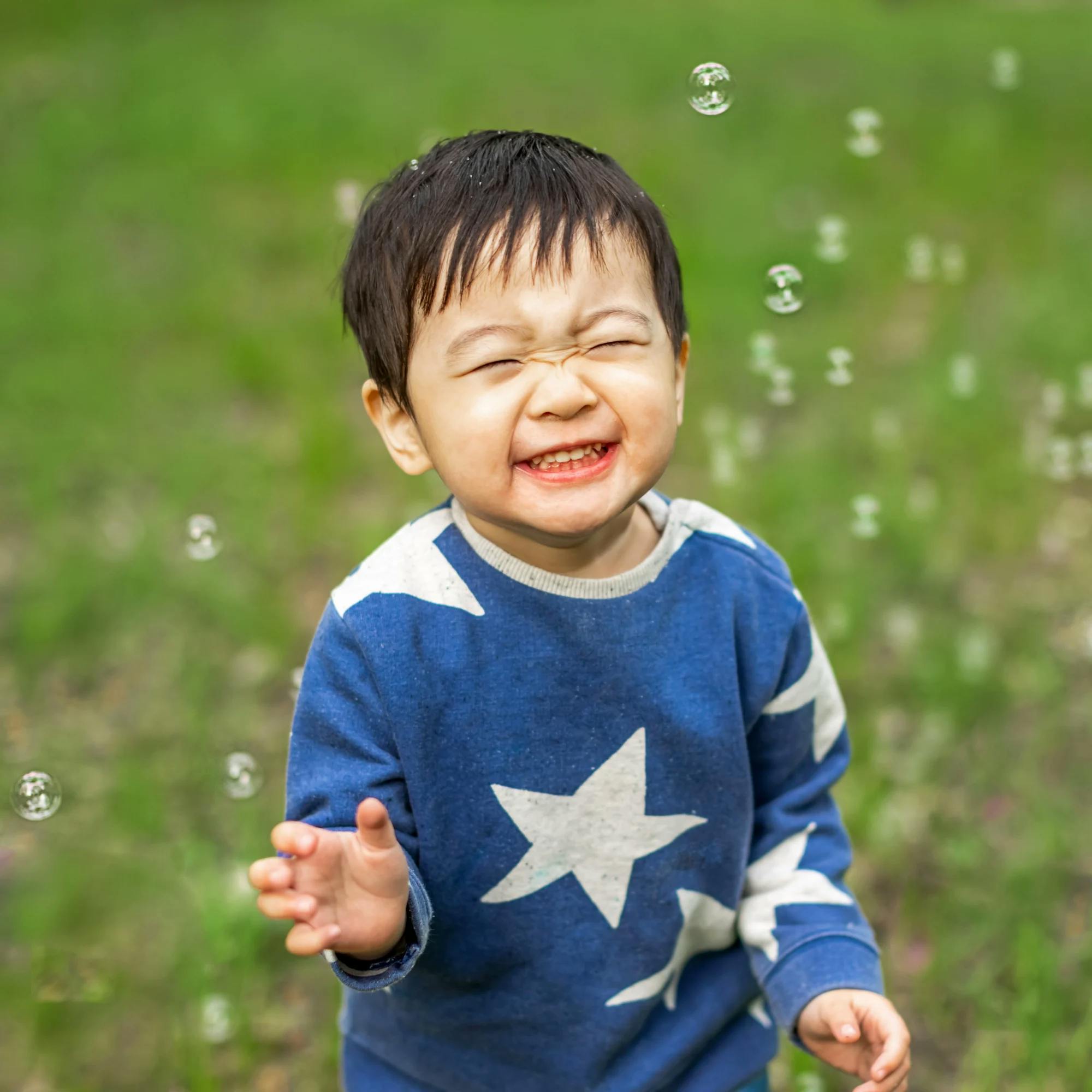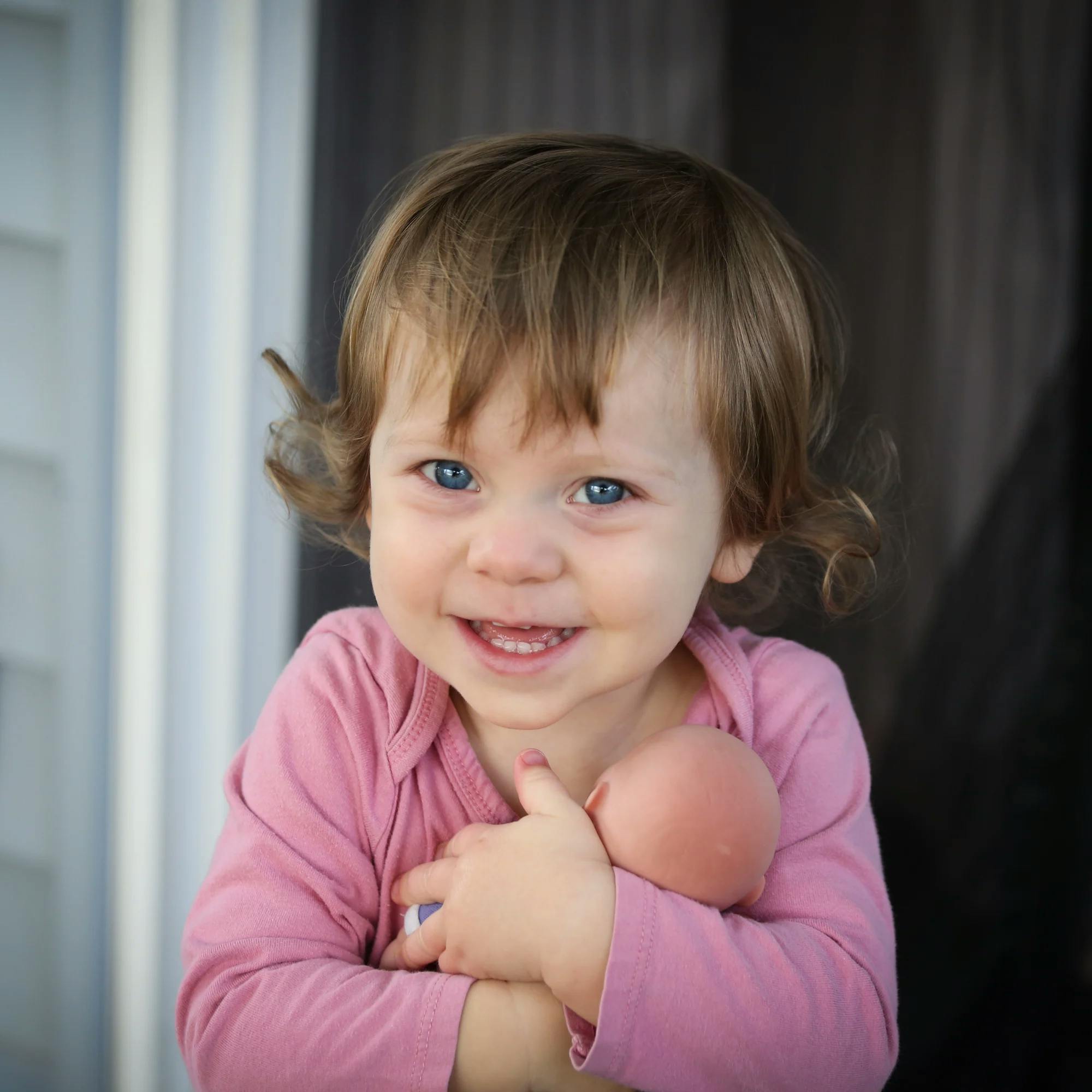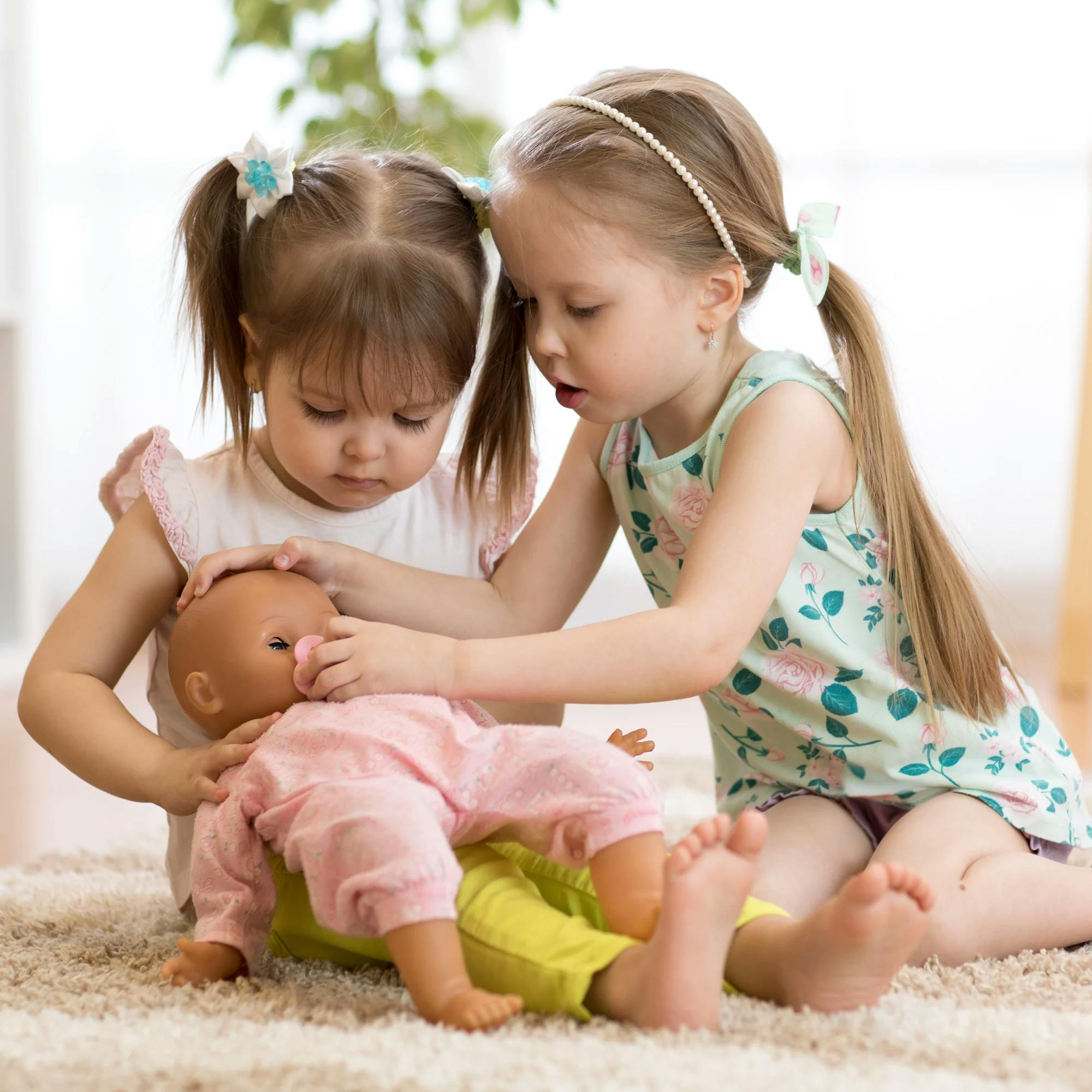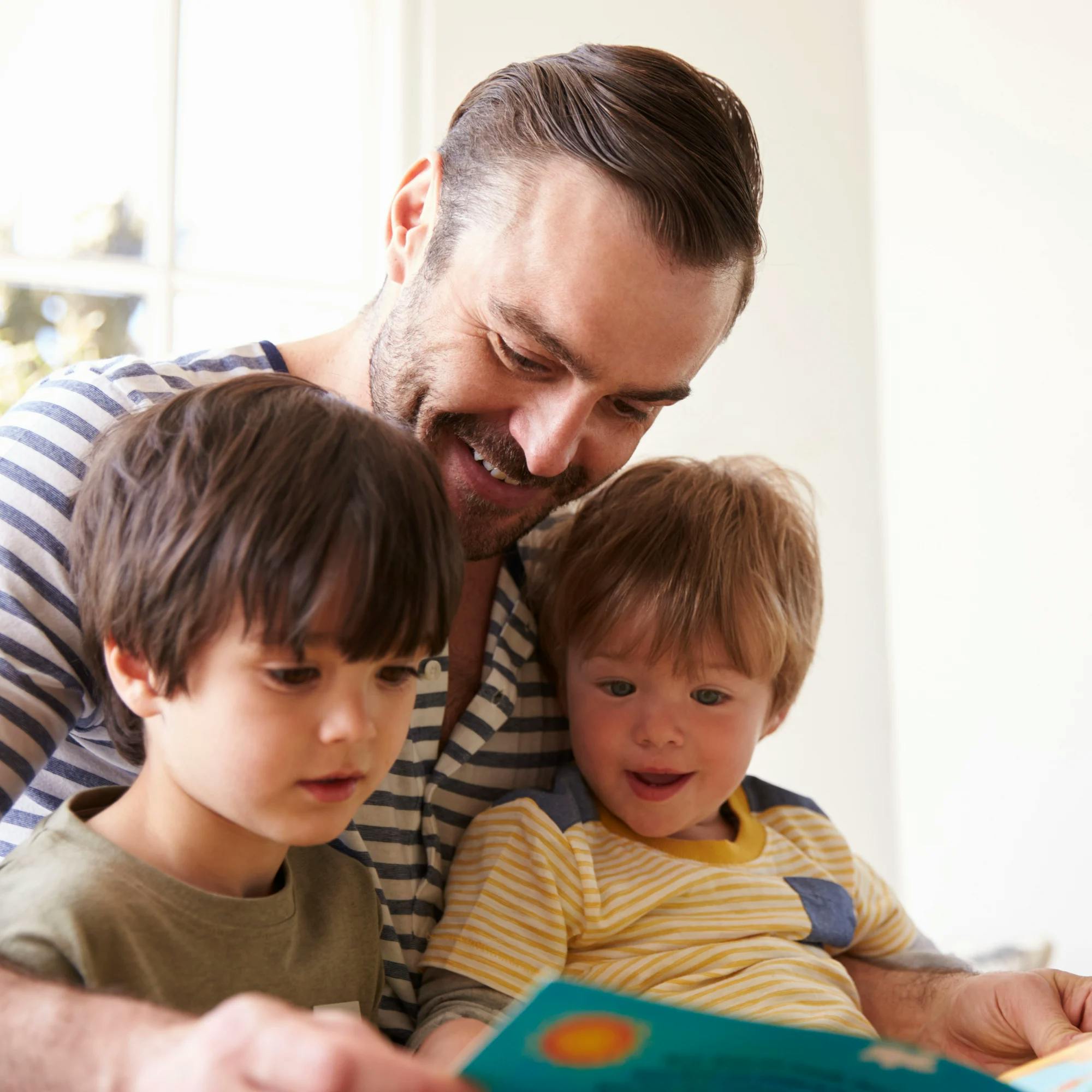Play is a child’s job! And play is especially important when it comes to growing speech and language skills. But how many toys does your child need? Does having too many toys cause problems?
Find out what the research says about how many toys your child needs. Plus, get toy recommendations and tips from a speech therapist about how to support your child’s communication development during play.
How play helps grow a child’s speech and language skills
What is your child’s favorite toy? Maybe they’re into dinosaurs, farm animals, or toy foods. Besides being fun, play is an extremely important area of early childhood development. It’s how children learn and explore the world around them.
Play actually mimics communication. It involves a back-and-forth exchange, just like a conversation. It helps children learn and develop a variety of skills, including cause and effect, joint attention, turn-taking, and following directions. All these skills are needed for language development and growth.
But playing doesn’t necessarily have to be done with toys. Play can be done with anything, including simple household items like bowls, cups, and old boxes.

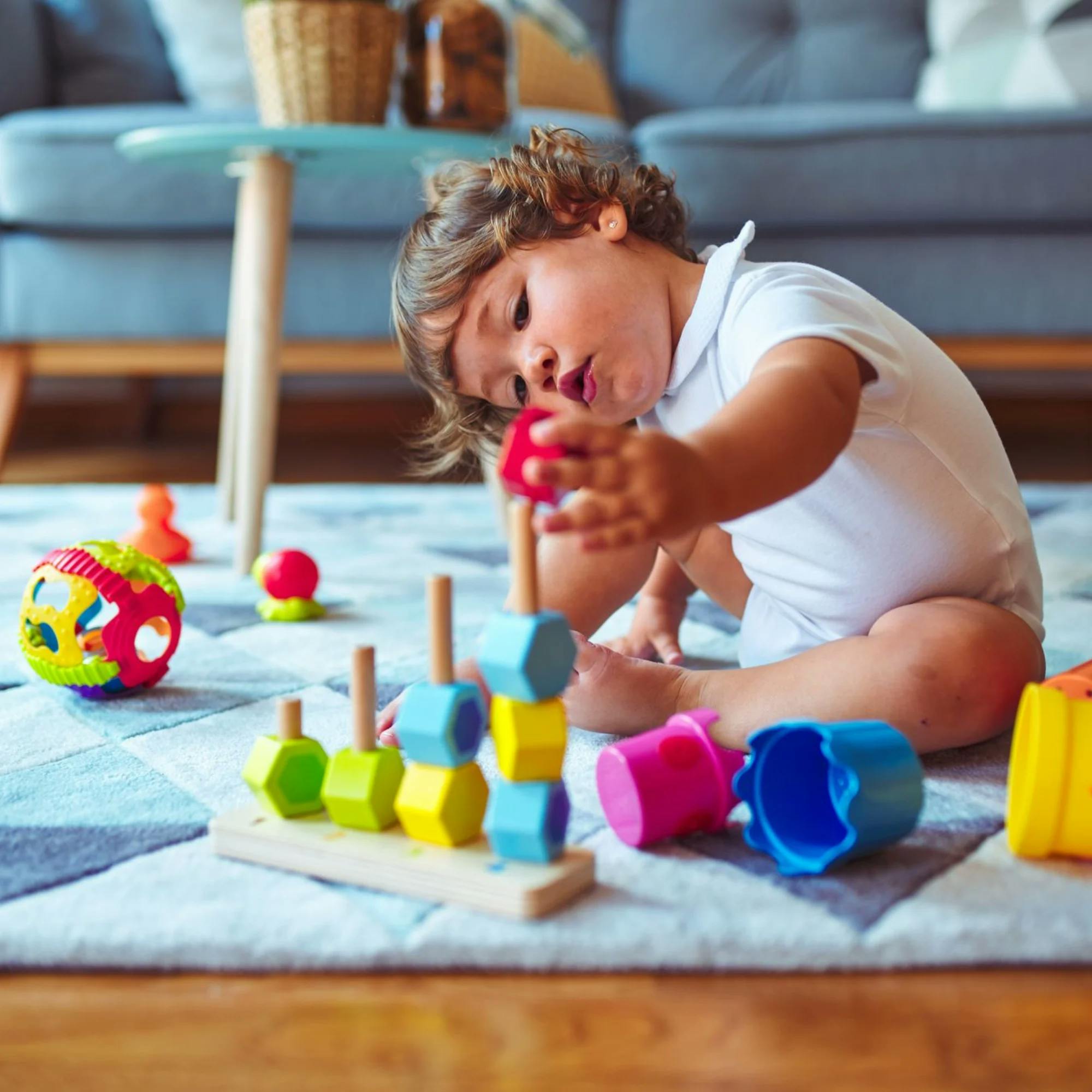
How many toys does your child need?
When you think of “play,” your brain might immediately picture a playroom full of colorful toys. And with access to social media and online stores, it’s hard not to compare your playroom to someone else’s–and it’s sometimes too easy to order new toys with the tap of a button.
But do our children truly have to have the latest toy? How many toys should your child actually have? Recent research suggests that those shelves full of the latest and coolest items aren’t really necessary.
This study shows that fewer toys in a child’s environment can lead overall higher quality play.
In this study, researchers found that toddlers who played with fewer toys (4 toys vs. 16 toys) actually played for longer periods of time and varied the way that they played with the toys. Hooray for independent play and more imagination! This study shows that fewer toys in a child’s environment can lead to better attention, more creativity, and overall higher quality play. In this case, it seems that “less is more.”
You may wonder if having too many toys can cause problems. It’s true that too many toys can become overwhelming for your child–and for you (so much cleanup!). So don’t worry about making sure you have all the coolest or latest items. It’s not about the number of toys–it’s about how you play and connect with your child.
3 fun toys for building speech and language
Now that we’ve discussed how many toys a child needs, let’s talk about the benefits of toys and other items used for play. Toys can offer endless opportunities for you and your child to connect and play together. And one of the biggest benefits of these interactions is the communication skills you can naturally teach your child in the moment.
When it comes to toys, try to choose ones that lead to open-ended play and imagination. Here are three examples:
1 Spinning stack toy
This spinning stack toy is so simple, but it can be used in many different ways.
You and your child can take turns placing the rings on the stick while saying aloud, “My turn. Your turn!”
You can hold the toy up high and wait for your child to look, then say, “Ready, set, go!” and let them all fall down.
Playing with this toy can teach your child skills like turn-taking and joint attention, as well as new words like “go,” “up,” and “fall down!”
You can also get creative with this toy and use it for a variety of purposes. Maybe you take the rings off and pretend they’re donuts to eat or telescopes to see far away. You can let your and your child’s imagination soar with this one simple stacking toy.
Check out this video from one of our speech therapists, Madeline, demonstrating how to play with this toy!
2 Food storage containers
Many household items can be used as fun toys. They offer lots of opportunities for creativity and play. For example, turn your food storage containers into hats or drums. Stack them up and knock them over. You can even give your child’s doll a “bath” in the container.
3 Play animals
Play animals like these provide opportunities to support a variety of speech and language skills. You can introduce animal sounds (moo! roar!) and animal names (cow, lion). Have a picnic with your animals and think about the things they may want to eat. Follow your child’s lead and let their creativity take off!
If you’d like more toy recommendations from our speech therapists, along with ways to use them, you can find them here!
Play supports the many skills we need to be successful communicators. So encourage your child’s imagination to soar, and watch all the amazing things they’ll do with just a few of their favorite toys.

 Alexis Irazoque, M.S., CCC-SLP
Alexis Irazoque, M.S., CCC-SLP



